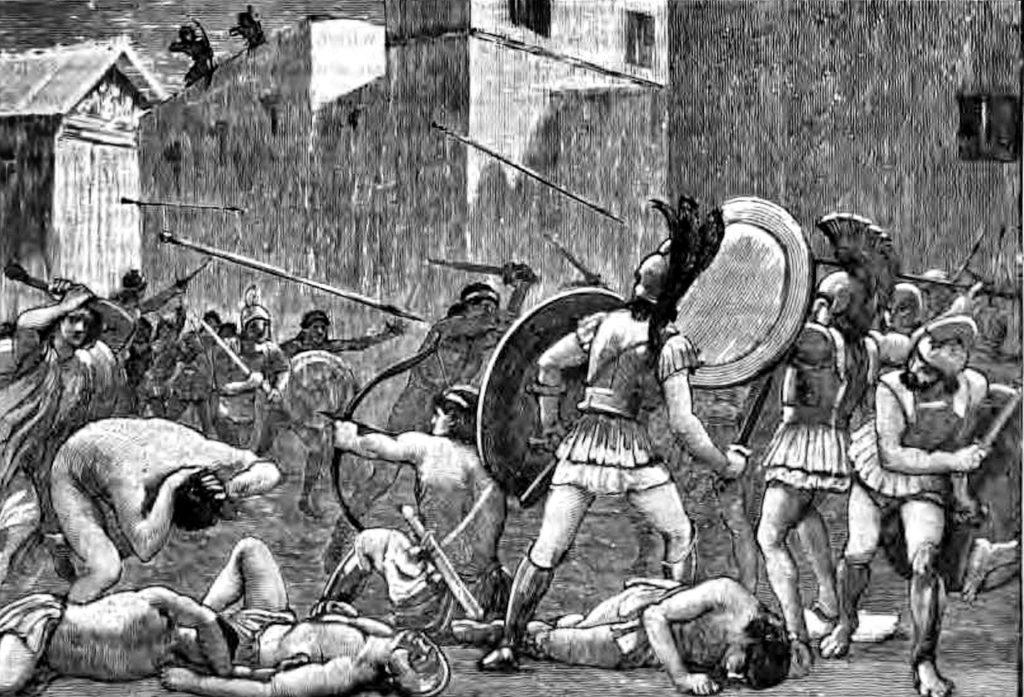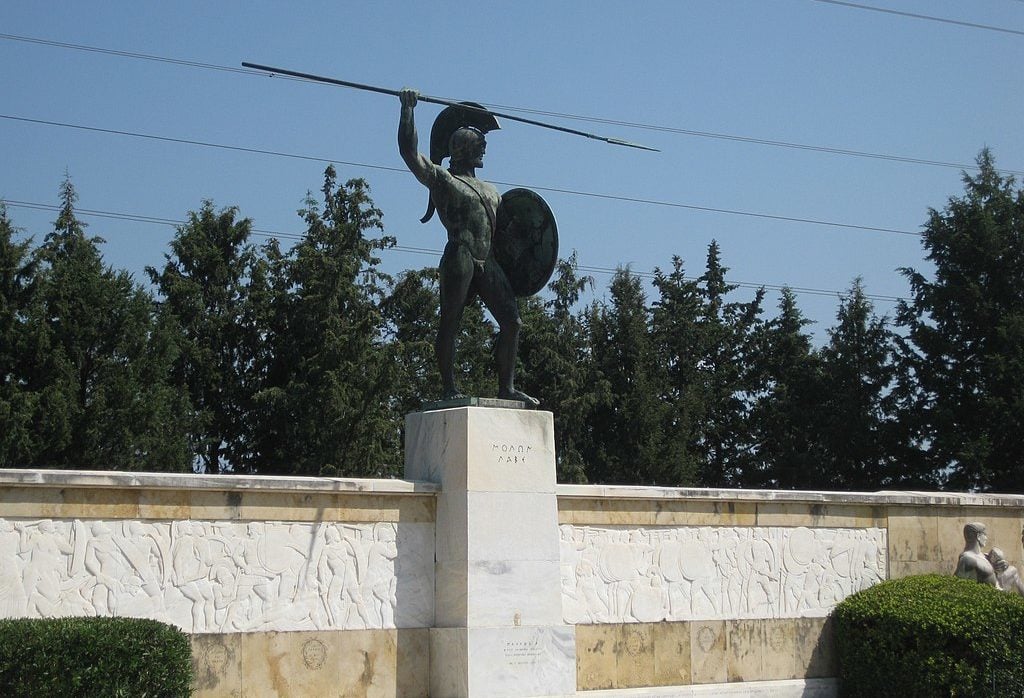How Ancient Spartans Raised Their Children
Source: GreekReporter.com

The Spartans, a rigid martial society in Ancient Greece, were known for the tough upbringing of their children, training boys to fight from the age of seven.
Physical training for Spartan boys was brutal, as they were placed in dangerous situations and there was a demand that they overcome fear. They were trained to become good soldiers and intrepid warriors.
Legend has it that a woman from Attica once asked the Spartan Queen Gorgo, “Why is it that only Spartan women can rule men?” Gorgo replied, “Because we are the only women who give birth to men.”
In fact, Sparta was the only city-state in Ancient Greece that was not surrounded by walls. Its only fortification was its fearless army of men who became men from a tender age.
The Agoge
Starting at age seven, upper-class Spartan boys began training for a lifelong career as professional soldiers. They entered the agoge (αγωγή), a rigorous and intensive military training program instituted by the lawgiver Lycurgus in the 9th century BC.
Hard physical conditioning honed their bodies, while they sharpened their minds through the study of literature and writing.
Before being sent to the agoge, Spartan parents raised their sons to be tough, disciplined, and self-reliant. They also taught them obedience and how to serve their community. Above all, they learned to be assertive, gallant, and committed to their fellow Spartan warriors so as to always put forth their best effort.
The goal of the agoge was to turn boys into Spartan soldiers whose loyalty was to the state and their brothers-in-arms, not their families. By the time they graduated, they were allowed to marry and start a family.
The curriculum was not limited to learning military techniques and survival skills but included literacy. By age 10 they had been taught to read and write and physical exercise increased.
An important part of the training was dancing. Spartan boys danced extensively holding their weapons so that all movements while armed became ingrained and natural.
By age 12 they had learned all of the Spartan war songs and the real military training would start. Their hair was cut and their tunics were taken away. They were only given a cloak for all weather.

The prospective Spartan soldiers would go barefoot all the time to toughen their feet. To develop a bestial mentality, they would eat very little so they were always aggressively hungry for more.
Hunger tested their cunning in finding more food. They could steal food, but if caught they were punished for being caught, not for stealing.
The training was harsh and brutal for prospective Spartan soldiers. To toughen them more, Spartan instructors beat them severely for any reason they saw fit.
Many boys would end up dying during the brutal training. Those that survived, however, became true Spartan soldiers and were unbeaten in battle.
Finished with the agoge at age 20, the young Spartan had to be selected by a group of older peers before he became a full Spartan citizen. From then on, his life would be devoted to the army.
Whether he was away at war or at home, the Spartan soldier would continue training with his peers to better his ability to fight in combat. That was his devotion.
Other cities in Ancient Greece were noted for their advanced culture such as theater and philosophy. Sparta was famous for personal fortitude, character, restraint, and the moral fiber of its people.
Spartan Women and Their Offspring
It was important for Spartans to increase the birth rate. The only way for the city’s population to grow was by increasing the number of babies born.
Sparta was consistently struggling to keep its birth rate above replacement levels in order to have more soldiers.
In a culture where giving birth to as many boys as possible was valued, women had a well-respected position and role in Spartan society.
Compared to women in other city-states in Ancient Greece, Spartan women had more rights and enjoyed greater autonomy. They could own land, inherit property, make business transactions, get an education, and participate in social and political life.

King Lycurgus reformed Spartan laws as early as the 9th century BC. He emphasized the importance of equality among citizens.
Furthermore, Lycurgus believed that the most important role of a woman was motherhood, and in order to be a good mother, it was important that a woman be educated and spend a lot of time with her children.
Spartan women were very proud of their male children who were expected to honor the city-state with their stoic behavior and deeds as soldiers.
Therefore, they were released from difficult household chores which were given to the subjugated class of people, the helots (είλωτες). In this way, women could concentrate on their motherly duties instead.
Spartan girls were given a similar physical fitness regimen as boys. Girls, however, were not trained in arms and warfare. They were educated at home, while boys attended public schools.
Education for girls included singing, playing musical instruments, dancing, and the composition of poetry. These together were called μουσική (music), a word deriving from the Muses.
Spartan girls formed choruses and competed for prizes. Occasionally, these competitions were part of religious festivals. The girl choruses likewise participated in honorary or celebratory events.
Did the Spartans abandon unfit children?
The might and bravery of Spartan warriors have fascinated people throughout the ages. A part of this legend was the myth that such fierce warriors could only be the product of a cruel society that put death in battle above all else.
The phrase Spartan women used when they sent off their sons to battle “ἢ τὰν ἢ ἐπὶ τᾶς” (either with it or on it), meaning either come back with your shield or be returned on your shield, added to the legend.
Along with this legend came the myth that the Spartans killed or abandoned male babies deemed to be unfit to become warriors.
The myth was created by later historians based on a claim written by Ancient Greek historian and philosopher Plutarch (Life of Lucurgus, 16.1):
Offspring was not reared at the will of the father, but was taken and carried by him to a place called Lesche, where the elders of the tribes officially examined the infant, and if it was well-built and sturdy, they ordered the father to rear it, and assigned it one of the nine thousand lots of land; but if it was ill-born and deformed, they sent it to the so-called Apothetae, a chasm-like place at the foot of Mount Taygetus
Ancient Greeks called that chasm Kaiadas (Καιάδας), and some historians adopted the killing or abandonment of ill infants as a truth.
Kaiadas, the abyss of “terror,” is located near the village of Trypi about ten kilometers (six miles) from Sparta. Excavations in the cave chasm in 1983 revealed several skeletons, almost all of the bones were from men aged 18 to 35 years old. A few female remains were found, but it does not seem that the archaeologists found any infant bones at all. Therefore, there is no archaeological evidence whatsoever that the Spartans discarded deformed babies there.
But should we really dismiss Plutarch on the basis of this complete lack of evidence exactly where we should expect it? Well, Plutarch was not claiming that this was a practice that existed in his own time. He claimed that it was a practice established by Lycurgus, the king and lawmaker of Sparta who probably lived in the 9th century BC.
Because Plutarch was writing many centuries after the fact, there is no reason to give any special weight to his words, especially not when there is a clear absence of archaeological evidence.
The original article: belongs to GreekReporter.com .